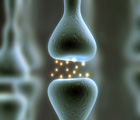 Chronic pain and epilepsy are debilitating disorders that affect millions of individuals in the US and throughout the world. Icagen, Inc., a biopharmaceutical company focused on the discovery, development and commercialization of novel orally-administered small molecule drugs that modulate ion channel targets, seeks to ameliorate the statistics and may be well on their way to doing so.
Chronic pain and epilepsy are debilitating disorders that affect millions of individuals in the US and throughout the world. Icagen, Inc., a biopharmaceutical company focused on the discovery, development and commercialization of novel orally-administered small molecule drugs that modulate ion channel targets, seeks to ameliorate the statistics and may be well on their way to doing so.
The company, selected and invited to present at OneMedForum NY 2011, has recently entered into a three-party collaboration with the Yale School of Medicine and Pfizer, Inc. to explore the potential efficacy of investigational compounds identified by Icagen and Pfizer in their existing collaboration. Utilizing its integrated scientific and drug development capabilities, Icagen has identified multiple drug candidates that modulate ion channels. The company is conducting research and development activities in a number of disease areas, including epilepsy, pain and inflammation and has two clinical stage programs in epilepsy and pain.
The three-party collaboration will explore the potential efficacy of investigational compounds as novel treatments for pain. These compounds may be useful in treating pain in people with a rare genetic disorder called inherited erythromelalgia (IEM), or the “man on fire syndrome.” Individuals afflicted with the syndrome experience a debilitating, life-long burning pain. The technology attempts to study the effects of selectively blocking Nav1.7 sodium channels with molecules previously identified by Pfizer and Icagen. Nav1.7 is responsible for producing impulses in pain-sensing neurons.
P. Kay Wagoner, Ph.D., CEO of Icagen noted, “We are very pleased that Yale researchers Stephen Waxman, M.D. and Sulayman Dib-Hajj M.D. have agreed to work with us and our partner Pfizer in the study of Nav1.7 channels from inherited erythromelalgia (IEM) patients. Drs. Waxman and Dib-Hajj are among the world’s leading researchers in the role of sodium channels in pain. The studies we are jointly undertaking should help us better understand how modulating Nav1.7 channels in IEM patients may reduce the extreme pain experienced by these patients. This information may additionally assist our broader efforts to find novel sodium channel treatments for patients with various pain conditions.”
Pain therapeutics represents a multi-billion dollar market. Demographics, physician prescribing patterns and novel products are expected to spur significant growth in the pain market over the next decade. Until recently, pain management has been dominated by traditional therapeutic modalities, including opiates and nonsteroidal antiinflammatory drugs. Recent innovations in pain management have been led by new treatments. Still, side effects of current drugs may prove unacceptable to some patients, and thus, pain management remains an under-served medical need.